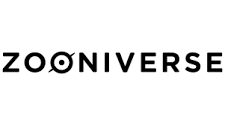An introduction to Zooniverse - using citizen research to open up archive collections

You may have heard of Zooniverse. It’s the world’s the largest platform for engaging volunteers in research. It has been very successfully used in a diverse range of research in areas such as art, space science, climate change, biology and the humanities.
Over the last few years archive services have moved into the arena of remote volunteering so how could Zooniverse help us expand our volunteering offer and deliver new research into our collections? Well, this two hour AWM seminar looked into that very question.
We were delighted to be able to welcome Dr Sam Blickhan, Humanities Lead for Zooniverse and Co-Director of the Zooniverse team at Chicago’s Adler Planetarium. Speaking from Chicago, Sam introduced us to the purpose of Zooniverse and a very high level overview of how to set up a Zooniverse project. Zooniverse enables you leverage crowd sourcing by setting up online projects whereby volunteers can support research and collection discovery. A classic example is an astronomy project that presents volunteers with images of stars and asks them to classify each star by one of three shapes.
Transcription
Archives are also starting to use this tool. A popular use is transcription whereby the participant is presented with a digitised image of text and asked to select a line and transcribe what they see. This is then aggregated by Zooniverse with say 2 other transcriptions of the same line to develop a final transcript. It is remarkably accurate in its transcription. There are also supporting functionalities such as a ‘Talk’ board for the project’s creators and participants to share comments, news and questions and so build rapport.
Design of a project aims to be a simple process through the bespoke ‘Workflow’ tool which enables you to build a project by choosing appropriate tools from a ‘Task Library’. There is also lots of in-built guidance (including video) and lots of examples to learn from. Zooniverse also provides support to set up projects. Sam’s key advice was: participate in an existing Zooniverse project to get a sense of the user experience before defining your own project; clearly articulate your desired outcomes and recognise the value of online engagement in overcoming barriers to participation; from early on see what kind of data the project is creating and exporting to shape a project that produces useful data; use Zooniverse’s beta testing service or at least undertaking piloting to create a robust process that is engaging for users – if users are not engaged you do not have a project.
Sam also emphasized the ‘open’ credentials of Zooniverse. Zooniverse requires all research results are made public two years after completion. So far 300 papers have been published based on Zooniverse research. Furthermore, volunteers must be able to have access to the data sets they created.
Notebooks of Sir Humphrey Davy.
Andrew Lacey then talked us through the current transcription project of the 75 notebooks of Sir Humphrey Davy. These are held at the Royal Institution and Kresen Kernow. Lancaster University is leading on this project to make them accessible. Andrew talked about the transcription process and confirmed the high level of accuracy provided through the aggregated process described above. He explained about how the project then took the Zooniverse transcription to use outside of Zooniverse with the intention of creating XML versions that will become content in the University’s digital collections resource.
Andrew emphasized the concept of the ‘latent knowledge of the crowd’ – recognise that volunteers will bring their own skills and knowledge that you will not be aware of initially but will inform their engagement. To that end he also underlined the importance of the project managers really being engaged with the ‘Talk’ board. This is where volunteers can build a sense of being part of a community, feel they are making a personal contribution, offer new insights and flag up issues as well as being a way for the project to inform participants about updates, successes and future plans. He also talked about the value of undertaking a pilot. All three participants advised on attracting volunteers through targeted publicity and through the Zooniverse community.
Voices in Time
Last up was Molly Doherty presenting the highly engaging story of the transcription of the records of Coram Foundling Hospital in the ‘Voices in Time’ project. Molly reiterated the learning points of the previous speakers. She also demonstrated beautifully what Sam had said about creating research output that has a long-term life and impact beyond what you might initially intend. The Coram project was all about transcribing the close detail of people’s lives. One very emotive record are the petitions to the Hospital in which the circumstances of children who can no longer be looked after by their poverty stricken parents are laid out. Volunteers really responded to this personal content and several have written blog posts and Coram has detailed the full stories of individual children. Coram is also using the resource to enable graduates to build up experience in researching original sources. One researcher even traced the emigration of a former Coram lady and ended up visiting her grave in Australia!
This was a really enjoyable and informative seminar. The basics and wide potential of Zooniverse were clearly demonstrated and AWM members were able to learn from the detailed experience of enthusiastic practitioners. AWM will be running more digitally themed professional events in the coming year. We look forward to welcoming you to them.
Discover More
To learn more about Zooniverse and give have a go at being a Zooniverse participant visit the Zooniverse website.






No Comments
Add a comment about this page